Great Scott! If my calculations are correct, when this baby hits 88 miles per hour, you’re gonna see some serious shit. — Doc Brown
On this day, forty years ago, July 3rd, 1985 the movie Back to the Future was released. While not as fundamental as Hackers or realistic as Sneakers, this movie worked its way into our pantheon. We thought it would be appropriate to commemorate this element of hacker culture on this day, its forty year anniversary.
If you just never got around to watching it, or if it has been a few decades since you did, then you might not recall that the movie is set in two periods. It opens in 1985 and then goes back to 1955. Most of the movie is set in 1955 with Marty trying to get back to 1985 — “back to the future”. The movie celebrates the advanced technology and fashions of 1985 and is all about how silly the technology and fashions of 1955 are as compared with the advancements of 1985. But now it’s the far future, the year 2025, and we thought we might take a look at some of the technology that was enchanting in 1985 but that turned out to be obsolete in “the future”, forty years on.
As the opening credits roll there are a bunch of different ticking clocks, signaling the time motif. But they are all analog clocks, some with pendulums, and not an LED or 7-segment display in sight. The only “digital” clock is a split-flap. The signaling of the time motif by clocks is done throughout the film, from the control panel in Doc’s DeLorean time-machine to the stopped clock on the town hall. Of course these days clocks have gotten much better and now they can even set themselves.
The JVC hand-held video camera recorded to VHS tape. The competing format to VHS at the time was known as Betamax which was developed by Sony. You will of course still find hand-held video cameras today but these days they are far more capable such as with 8K video cameras and you probably have one as a feature of your smartphone anyway. The tape-based VHS and Betamax media has been made obsolete mostly by flash media.
The old Cathode Ray Tube (CRT) television gave way to flat-screen LCD displays and nowadays transparent OLED is state of the art. There were two competing video standards back in 1985 being NTSC which was used in North America, Japan, parts of South America, and so on; and PAL which was used in Europe, Australia, parts of Asia, and Africa.
These old standards didn’t accommodate more than 30 frames-per-second, NTSC was 29.97 Hz and PAL was 25 Hz; and long before “widescreen” 16:9 aspect ratios were released in the 90s they had resolutions of up to 720 × 480 for NTSC and 720 × 576 for PAL. That’s “up to”, there were versions with resolutions worse than this. Of course this is a long way from the 4K@60Hz you have become accustomed to! Also there were no remote controls for these old beasts, you had to get up out of your chair to adjust the volume or change the channel, oh the indignity of it all!
When Marty McFly rocks out, he plugs his guitar into a vacuum tube amplifier, a piece of gear that has proven to have surprisingly long legs. You would think that it would now be an anachronism, replaced by transistor technology, but many guitarists still think that analog vacuum tube technology has a superior and warmer distortion sound. Powering the amp is another dinosaur that survived. The Variac controller shown is an autotransformer that is still made and used, although in 1985 the Variac trademark was owned by General Radio but is now owned by ISE, Inc.
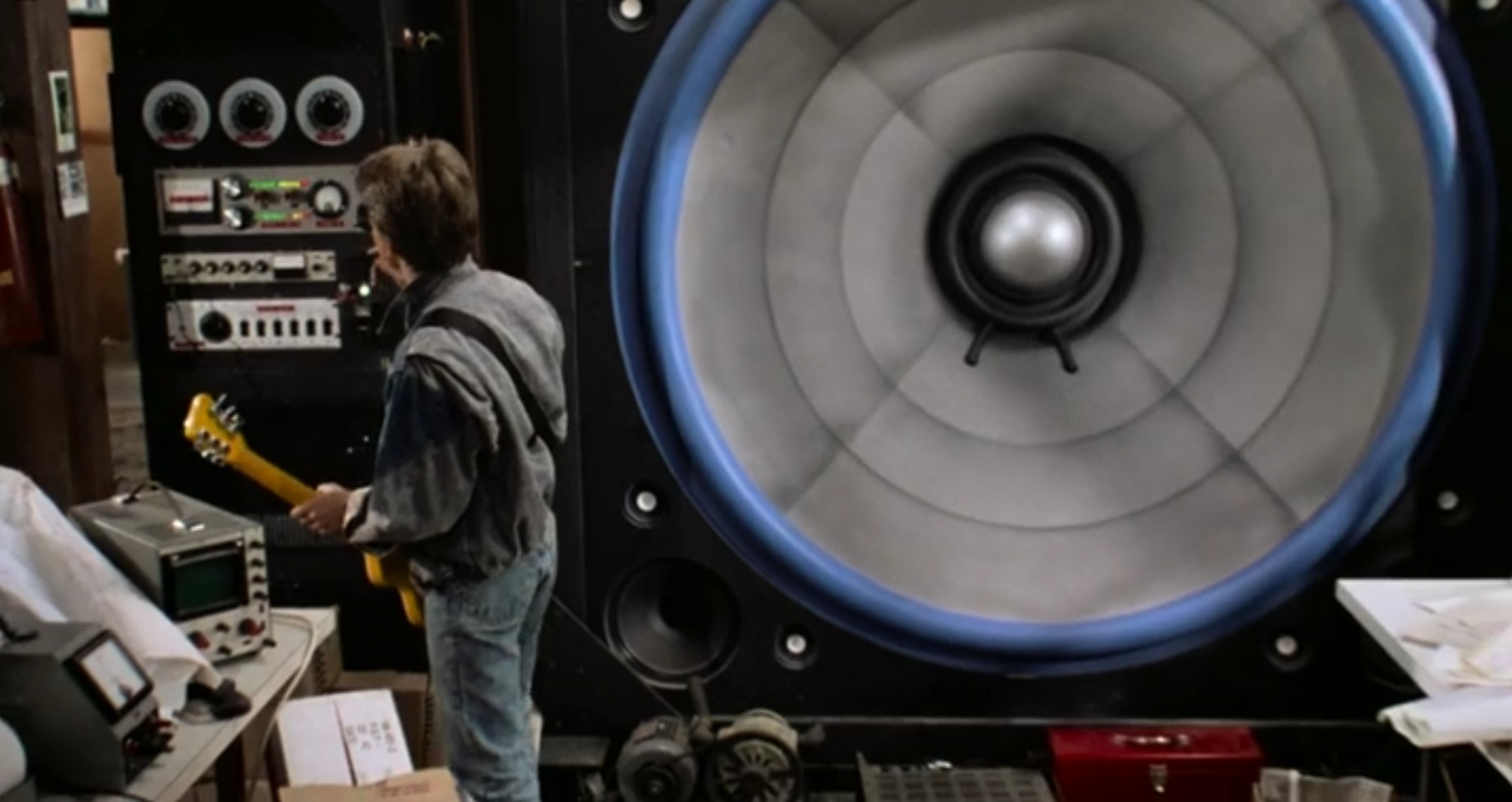 The Cathode-Ray Oscilloscope (CRO) on the table there is completely obsolete, but it remains customary for a hacker to get nostalgic and buy one on eBay. The analog Voltage-Ohm-Milliamp (VOM) meter is maybe only half obsolete, and as with the CRO, a nostalgic hacker will still have one. Everyone else has a Digital Multi-Meter (DMM) which can do everything a VOM could do, and much more.
The Cathode-Ray Oscilloscope (CRO) on the table there is completely obsolete, but it remains customary for a hacker to get nostalgic and buy one on eBay. The analog Voltage-Ohm-Milliamp (VOM) meter is maybe only half obsolete, and as with the CRO, a nostalgic hacker will still have one. Everyone else has a Digital Multi-Meter (DMM) which can do everything a VOM could do, and much more.
The old reel-to-reel magnetic tape recorder and player gave way to miniature flash storage in the end. And also a bunch of other media formats in the interim, ranging from floppy-disks to hard-drives. Reel-to-reel magnetic tech had a number of drawbacks, not least was that rewinding and fast-forwarding to find the track you were looking for was a real hassle. (Should we say a reel hassle?) Also the signal would get weaker and more distorted the more copies were made, this was known as generation loss and isn’t relevant to digital media.
The pulse-dial telephone gave way first to DTMF-based phones and then ultimately to cellphones and Voice over IP. People who are too young to have seen or used a rotary-dial phone won’t know how slow and annoying they were to use. To key in a number you had to rotate the dial in proportion to the number you wanted to enter, one for one, two for two, up to nine for nine and ten for zero; so if you had larger numbers in the phone number you were keying in you would have to wait for the dial to count back, which was tedious and boring. It is certainly not for practicality reasons that hackers keep trying to bring them back.
Like the pulse-dial and DTMF-based landline telephones the cordless telephone also gave way to cellphones and VoIP, but the old cordless telephones get a special mention because they were totally insecure. The radio signals they used were easily sniffed by anyone who knew how to operate a radio. To patch this technical vulnerability, the FCC made listening to particular frequencies illegal, and manufacturers cut out the cellphone and wireless phone bands from their scanners.
And to wrap-up let’s give a special mention to the push-button Seeburg vinyl jukebox. These were commonplace back in the day and every good bar had a coin-operated one. These days you’re unlikely to find a jukebox at the bar, it is perhaps more likely that one of the bar staff is streaming music to the bar’s Bluetooth speakers from their smartphone.
Thanks for coming with us on this brief journey back to 1985, it was fun to take some time to look at some of the things that have changed, and to pay our respects to this icon of hacker culture on its fortieth birthday. Don’t forget to sound-off in the comments regarding where you have seen references to the movie!


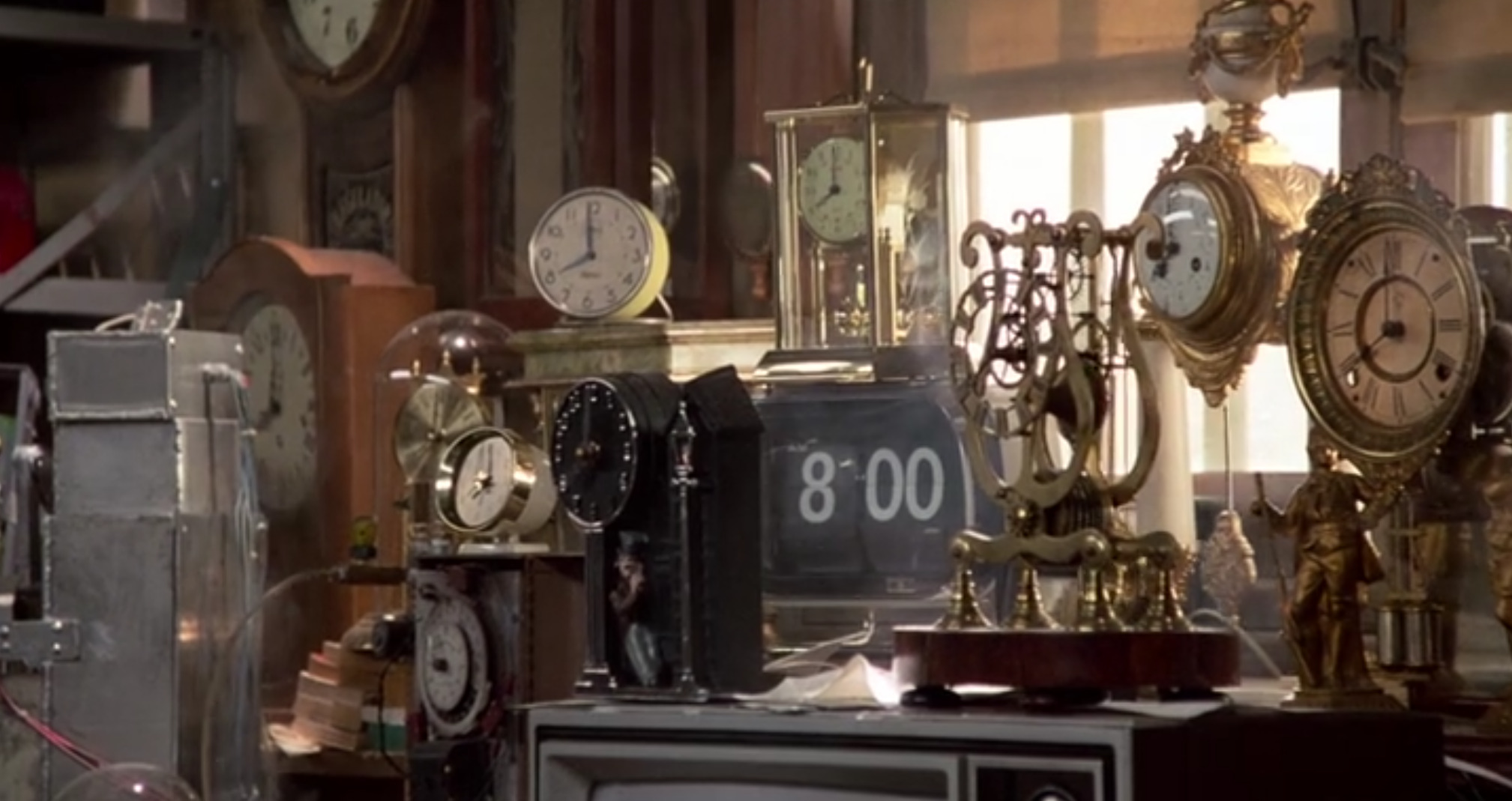
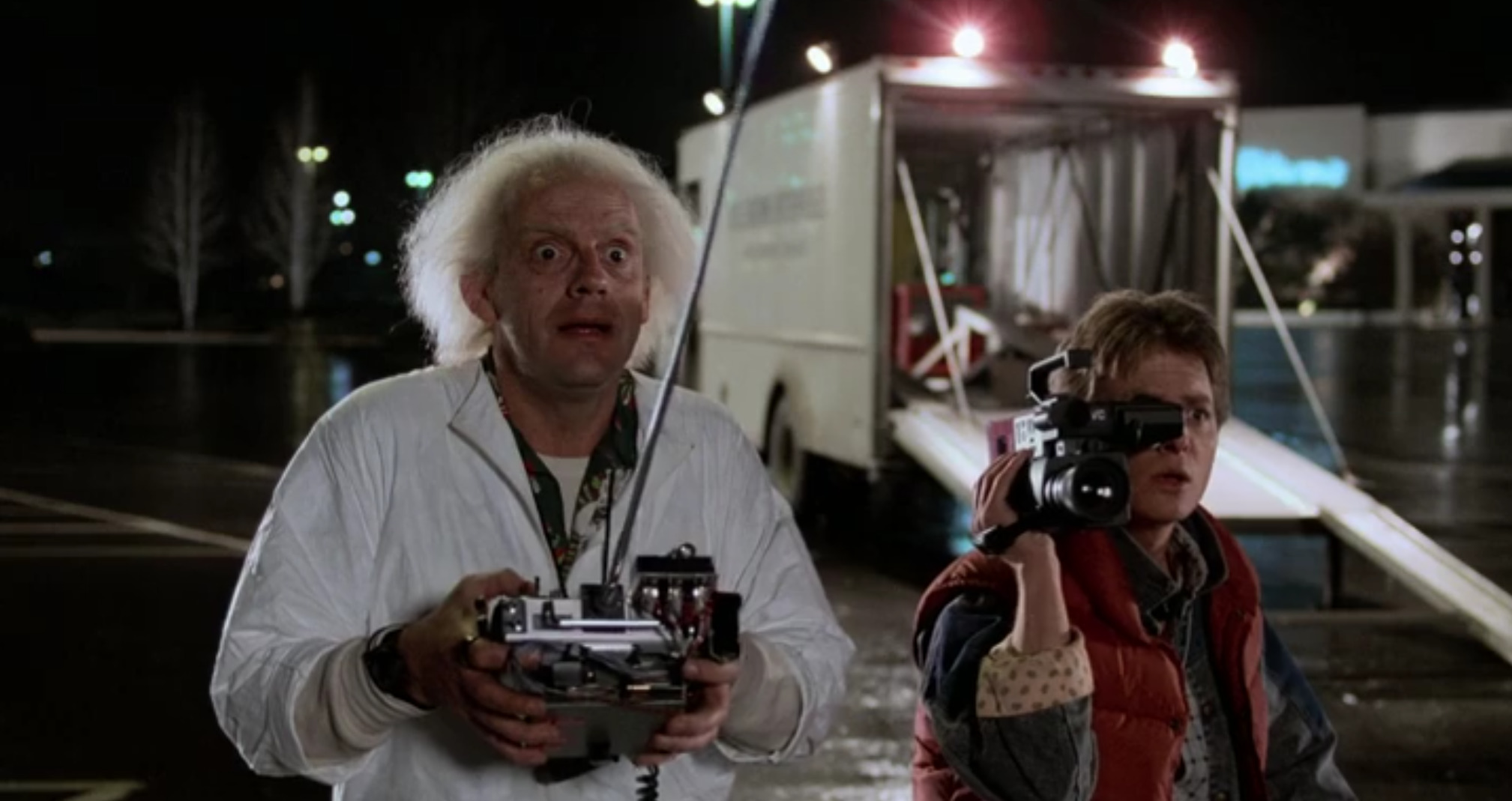
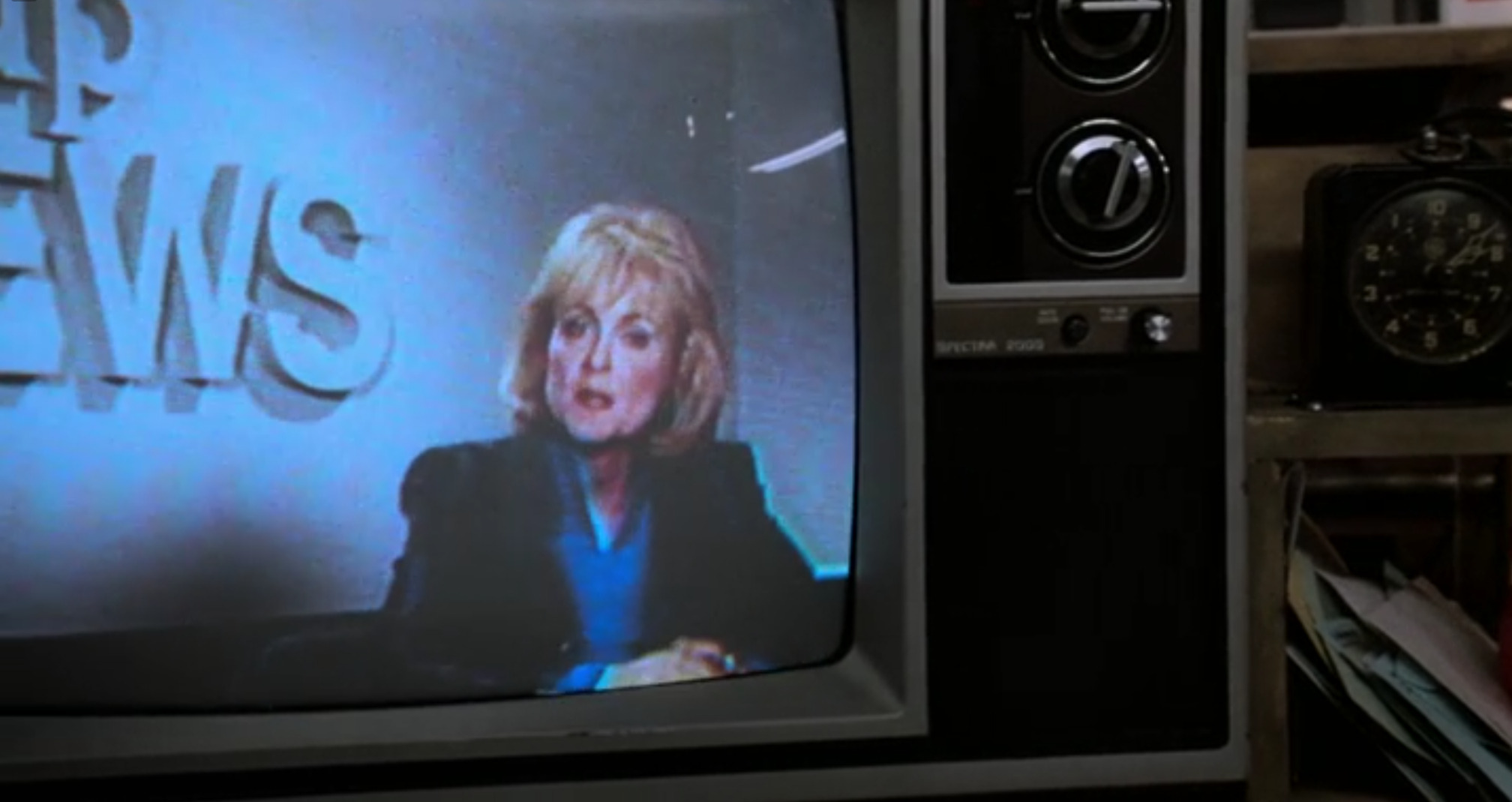
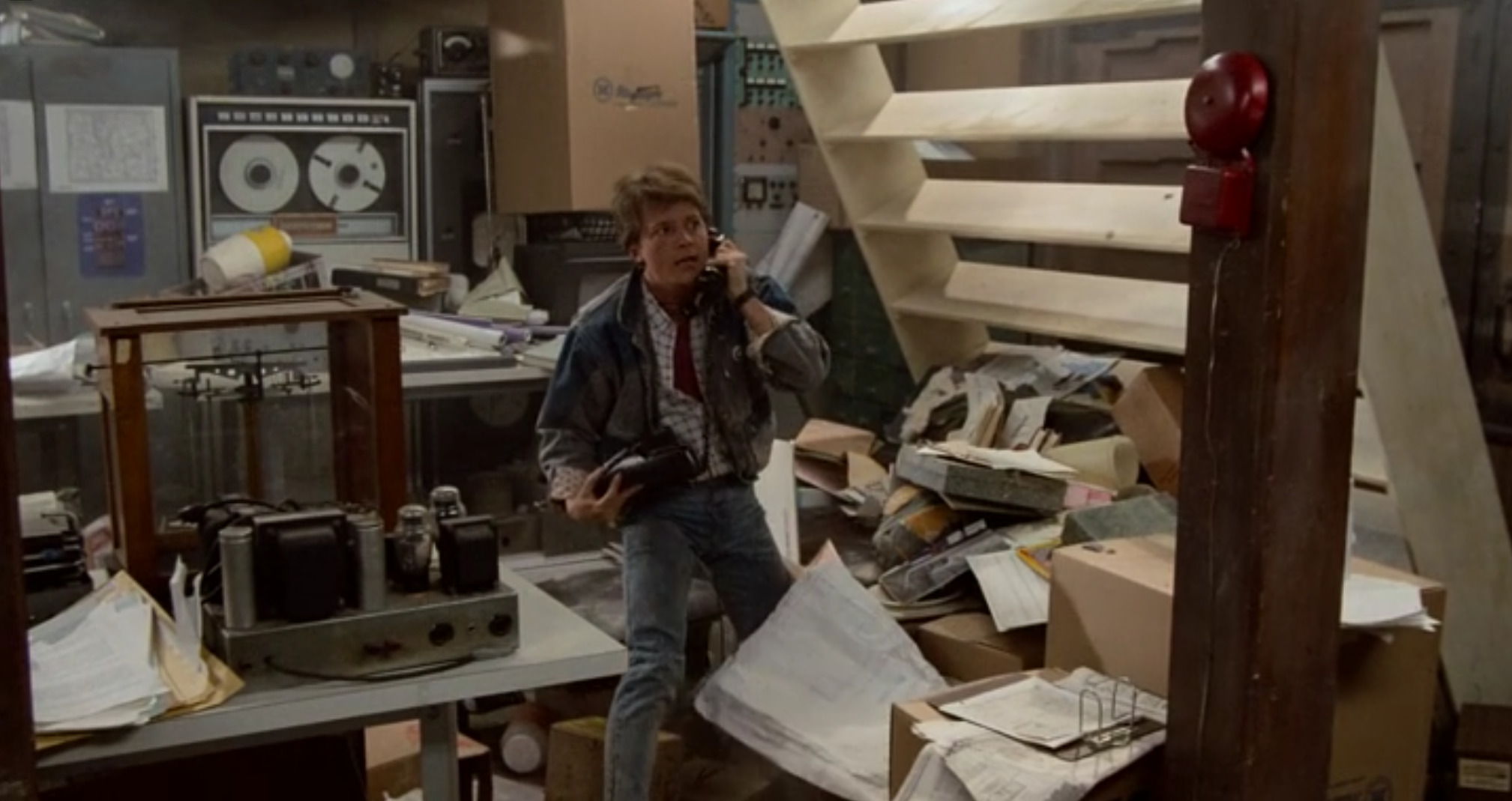
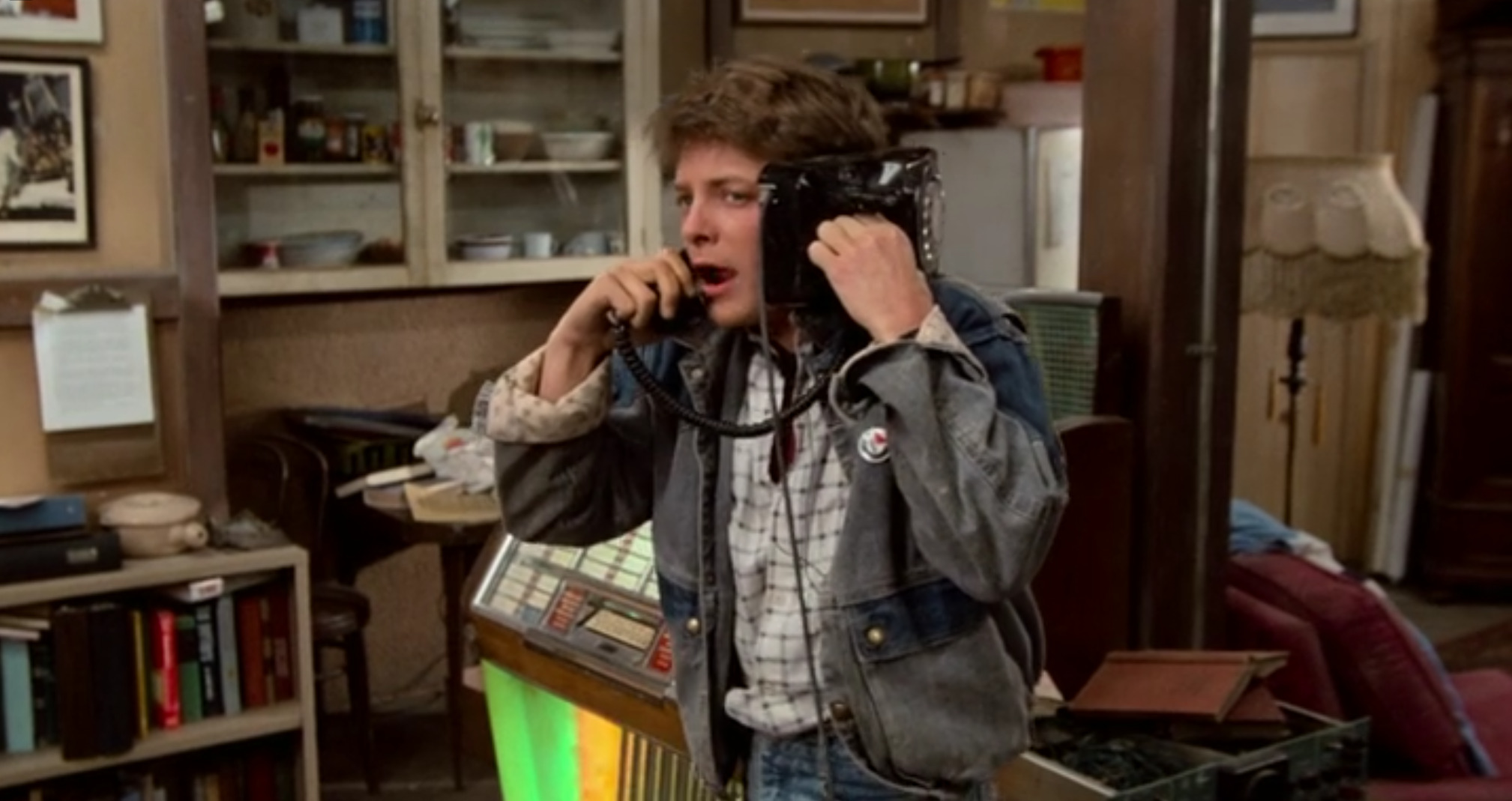
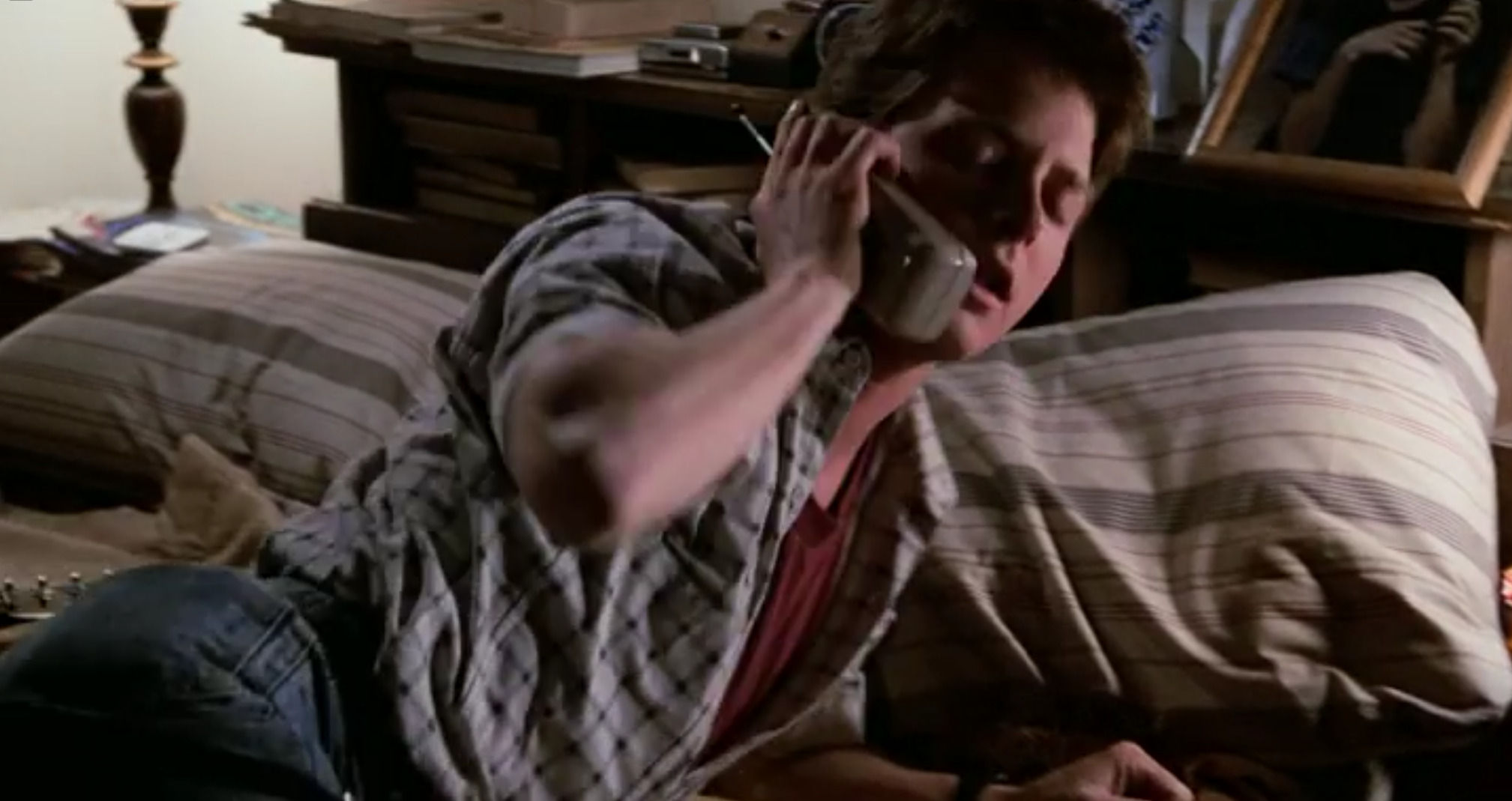
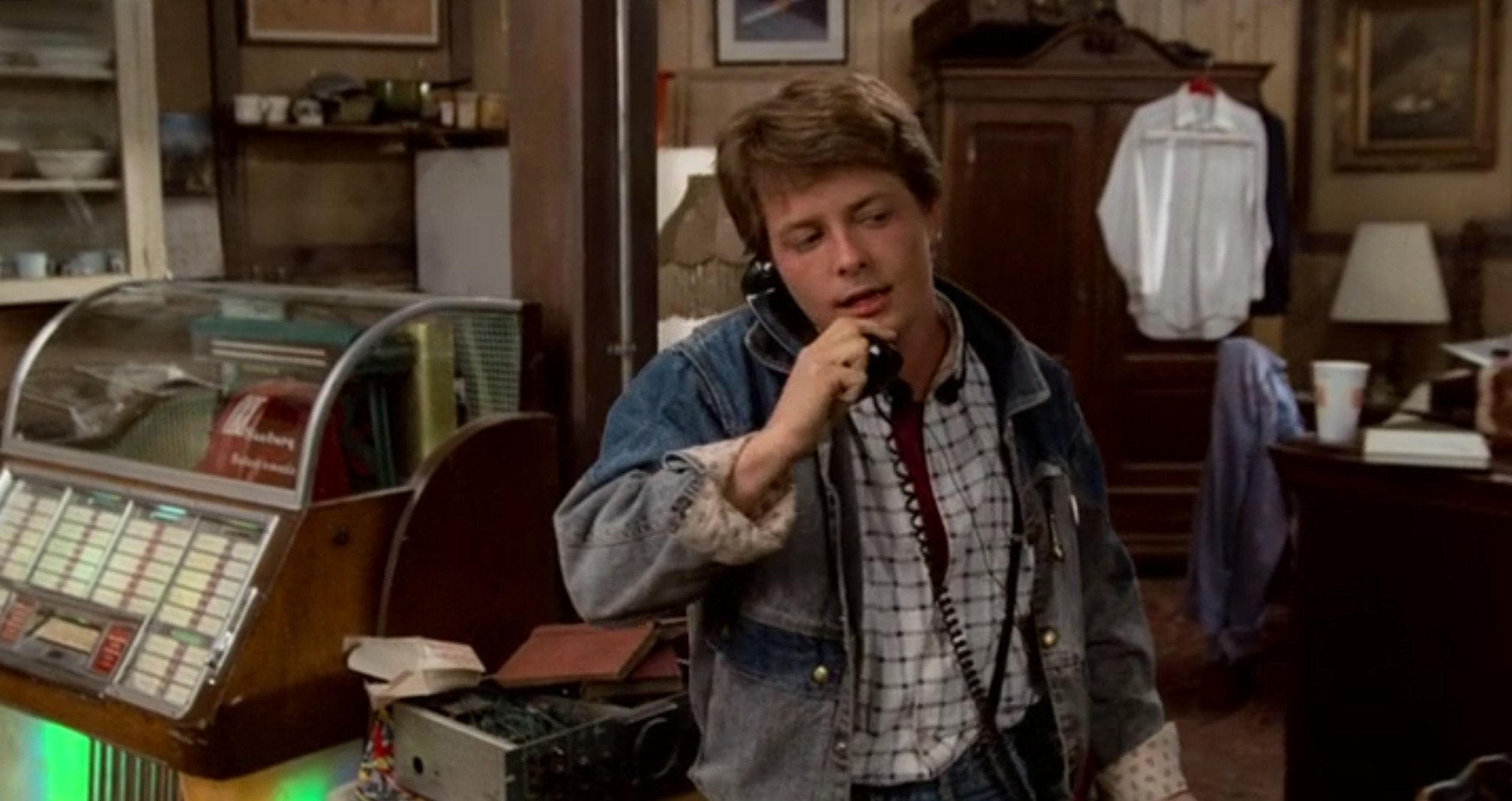













Wait, no remote controls for television sets? What alternate 1985 are we talking about? We had a Zenith TV in the early 60’s that used a remote (“Zenith Space Command”) with 2 or 4 mechanically-activated metal bars that would generate different ultrasonic tones, allowing you to change channels and volume. It was the original “clicker” that became the term we used for any remote control.
IIRC, there was a light-based model before that, but they didn’t work well in bright rooms.
And there was the remote control method where you made your kid go over and change the channel for you.
That model was discontinued. Apparently it costs too much for upkeep.
Remote controls were available, though rare. We had a wired remote control for our Betamax. A neighbor had an audio based remote control for their TV and they had cable TV so they had a dozen channels rather than the 5 we got on rabbit ears. The remote was a box with four or five buttons, each making a “dong” sound of a particular frequency that the TV picked up on. I suspect it was supposed to be ultrasonic, but I could hear it with my young ears. Something like https://en.wikipedia.org/wiki/Remote_control#/media/File:Zenith_Space_Commander_600.jpg
1985? IR remote controls were common by then. Not ubiquitous, but definitely common even on smaller (14″) TVs. At least in the UK, anyway.
😆 Not just that, the remotes seemed to have a mind of their own, often changed to the wrong channel. and were often no where to be found.
Luckily I was replaced in this role when my younger brother became old enough to do it.
indeed and it’s a somewhat ironic artifact that the various modulation frequencies used for IR remotes today are legacy from the prior ultrasonic because they could reuse the existing demodulation electronics
Err, sorry, not quite.
The very earliest IR remotes did it exactly as you say – using the same different ultrasonic frequencies, albeit modulating an IR diode with them, reusing the same ICs.
But in the late 70s, digital modulation became standard. Remotes would use only one carrier frequency and modulate it with a digital signal (turning the LED off and on for several cycles of the carrier).
The fact that IR remotes modulate the carrier at all is to prevent random light flashes to trigger the circuitry (the earliest digital remote controls might have had that problem, what with very short codes…).
There’s also a protocol (I think ITT used it) that ditches the carrier completely.
I don’t know though why some IR standards use different carrier frequencies (like 36, 38 or 44kHz), especially when it seems all IR receivers don’t care (they do strip out the carrier on their data output pin though)
I used to have a B/W TV which had a remote, not sure what age now but it probably was from the late ’80. Anyway, it had an IR remote control and interestingly it used a 555 to modulate the IR.
To my memory it is the only commercial product I have ever come across that used a 555.
And an interesting/fun/irritating (depending on whether you were the perpetrator or victim), you could shake your car keys, and make the TV go crazy with those old audio-based remotes. ;-)
Yup! Back in 1985 we actually car keys. Now it’s either a fob or your phone.
There are usually still keys in the fob. Remember that when the battery dies. My locksmith friends tell me about the calls that end with them showing people the key. Although they usually try to ask on the phone first. 🤣
Dont forget the old wired remote controls. The Zenith “lazy bones” came out in 1950.
If you were a hacker you might just put the VCR or Tuner by your chair and run the video to the TV, then you could change channels without getting up 😂, I may have done that a time or two.
You misspelled SLacker.
We had one of the later Zenith remotes from the mid-’70s with electronically-generated ultrasonics, and running the vacuum cleaner would somteimes make it go nuts.
My dad ran a TV and radio shop in Melbourne, Australia in the 60s and 70s. He was selling Philips colour TVs with remote controls (ultrasonic, not IR) in the mid-70s. By 1985 IR remotes were common, both for TV and HiFi.
I was going to say, the 13″ Trinitron we wore out our box set of Back to the Future definitely had IR, although I remember the casing broke by the late 90s and sometimes I would use a squirt gun to short the buttons mounted on the front corner of the PCB
I remember back in.. 78? That my Dad had a “remote” that consisted of a looong cable attached to the TV (I guess to the TV electrical outlet) with a single switch on the other end to turn on/off the TV. We were happy with so little :D
I remember a light based remote because as a kid my portable fluorescent camping lamp changed the channels in the TV when I turned it on. My sister had a TV with a phono jack for a wired remote too
Generation loss in digital mediums happens through codecs. For example, rip a cd to 128kbps MP3, then burn this to a new cd-r. Repeat this process several times and the audio degrades considerably. This was a common occurence during peak CD-R and MP3 usage.
Lossy codecs like Microsoft Video-1 in 1992. Lossless like ALAC around 2000.
I should have specificied “lossy codecs” which would be what a majority of multimedia files would be encoded with in the early p2p filesharing era. 128kbps MP3 was.dominant until maybe the mid 2000s when memory costs dropped enough.
But why would you when you have the original MP3 file? In my recollection, people would rather burn the MP3 onto the CD-R and play that, since most portable CD-players, DVD-players, Xbox and PS2 and car stereos could play MP3s directly.
There were a lot that didn’t, especially in cars. By the time I had a car with MP3 support I didn’t need it to.
NTSC and PAL … and SÉCAM, the French version used in France (obviously), much of Africa and the Soviet Union
??????????? What is this post about?
Sir, this is a Wendy’s.
“…this movie worked its way into our pantheon…”
As one grows older he/she finds a need to inspect the items in his/hers pantheon more often :- ]
good point – wendy’s has survived 40 years relatively unchanged. last time i went they even still had face to face ordering.
Reddit is down the hall, please go back
I came here for an argument!
Oh, I see. This is Abuse; you want 12A, next door.
My thoughts too. I expected a comparison of the future vision of BTTF to what we actually have today, but instead got an inventory of the electronics in the movie, like, what? So BTTF looks like the past because… It’s set in the past? Seriously wondering if this was written by ChatGPT.
LED clocks came out in the 70s. https://christmas.musetechnical.com/ShowCatalogPage/1978-Sears-Fall-Winter-Catalog/0291
Same catalog, Touch tone phones https://christmas.musetechnical.com/ShowCatalogPage/1978-Sears-Fall-Winter-Catalog/1099
My grandparents had a touch-tone phone in the 1960s.
Me? I used pulse dialing well into the 1990s, even when the phones themselves had pushbuttons. Why? The phone company (which always had a local monopoly in the US) charged several extra dollars per month for touch tone service, even though tone dialing cost the phone company LESS. That always rubbed me the wrong way, and I was happy to waste a little extra time tying up the switching equipment just to stick it to the telco.
Nostalgic about 80s?
Nice, and we’ll look to this movie to reminisce about ICE vehicles, and ponder where 1.21 Gigawatt EVs came from.
RE: rotary phones – one can literally build his own local/short-distance exchange using step relays, old phones and a 12v car battery (though, 12v is kinda low – if i remember right, since it was DC, the good/solid local exchange would need at least 40v, ideally – more, and that would kind of limit the maximum distance for one direct connection). That’s the thing, rotary phone exchanges were almost entirely electromechanical, and the electronics mostly dealt with handling the sound, compression, etc. I am pretty sure surplus step relays can now be found on them ebays for dirt cheap, and at the time were good solution to the overwhelmed cities’ switch boards. Obviously, unencrypted, but so were most communications of the era.
Pretty sure most communications now are not only unencrypted but also being recorded and stored in massive NSA data banks. So really just saying ,”the more things change the more they stay the same.”
The encrypted ones are being stored too so they can crack them in 10 years. 🤣
That, too, and let’s not forget about all kinds of chinese/russian/indian/turkish paid “agents” in both US and Canada. Most make quick buck mules, not “agents” wearing glasses, rain coats and fedoras, but probably operators of the mysterious drones flying near points of interest.
Things got incredibly simpler for the average MSS/GRU/R&AW/MİT (Millî İstihbarat Teşkilatı) mule. Just how much simpler? Quite a lot – case in point, I’ve dredged up those alphabet soup agencies names using google search; back during the cold war era simply knowing what GRU stands for could land one in distant parts of Siberia.
It’s nice to focus on what’s different, but you’d have focused on what’s similar. Blue jeans and guitars are the same as we have now. Papers, we still use them. We don’t have elevators in houses, we’re still using staircases. And the humans, poor humans are still the same. Trucks are the same, and so are the cars (except that now, we have a very small fraction of mutant who use electric powered cars). The villains are the same (at least in American’s imaginary). The brands are the same (Coca cola, Pepsi, …).
Plutonium is easily available. ;-)
It’s at every corner drugstore.
Because of past nuclear tests, trace amounts of plutonium are now present in soil and some foods like root vegetables
Move over guitar, I am a MPK console. Jeans come pre shredded.
In 1985 I was an intern at Westinghouse, and we had digital oscilloscopes. They just cost tens of thousands of dollars, and were almost as functional as a $300 Rigol.
I was a Junior in College at the time… Using a modem, I was dialing up the VAX with my DEC Rainbow… 1200 baud? I think?
Thanks for the article dredging up some memories…
Yep. I was rocking a Data General D200 CRT terminal with a GDC 1200 baud modem. Shortly thereafter I scored a PC motherboard and built up my first PC. Pretty much all of my computing gear at that time was assembled from leftover/defective/test parts salvaged at DG, where I worked. Packaging of my stuff was always an afterthought, so watch where you stick your fingers!
My Uncle Jim worked at Westinghouse. He passed away a few years ago from covid.
His name was James Sylvester, I knew him as Jim though. It would be interesting to learn more about what he did at Westinghouse. Maybe you worked with him?
In 1985, we had LED digital clocks, remote control TVs, cable TV with dozens of channels, touch-tone dialing, cordless phones, digital storage oscilloscopes, digital multimeters, LCD screens (albeit, not very good ones), video media with DVD-like output quality (Laserdisk), and all kinds of other things that are hinted at not existing in this article.
We neanderthals living way back in those days were actually pretty advanced, even by today’s standards.
My gut feeling is that the technology mix featured in the film was influenced by a combination of: setting, Doc Brown had been living in his garage for a while, not updating what he didn’t absolutely have to; marketing, JVC paying for product placement of their latest camcorder; budget, Amblin and Universal making as much use of existing props as possible.
Hi, I think you’re right that most “90s things”
or “2000s things” had existed in some way in the 1980s already.
My Compaq SLT 286 laptop, for example, was sold by late 1988.
It had an LCD panel at full VGA resolution (640×480 pixel at 16 grey levels).
VGA itself had just made its debut in 1987.
That being say, I do think that the author has a point.
All things he listed were part of the “essence” of the 80s, so to say.
If you ever watched synthwave videos on YouTube, you’ll notice.
There’s the 80s in real life vs the stylized 80s with bright neon colors and Rubrick’s cubes everywhere.
I lived the 80s,
There were quite a few rubik’s cubes around. Even McDonalds had their own. Every kid I knew had, at least, a Rubiks cube and a snake.
Lots of dayglo clothing, and a fair share of manic panic hair coming close to dayglo as well.
I guess if you were from Ohio or some other flyover state you might have had a more drab 80s than I did in Santa Monica, New Orleans, Denver, and Miami.
I guess it had a lot to do with location and/or budget.
Where I lived in New Hampshire, the mid 1980’s looked a lot like the 1970’s but with some updated technology. We had avocado kitchen appliances and rotary wall phones, but had cordless phones as well. Our living rooms (mine and others’ that I visited) looked straight out of the 70’s in terms of furniture and decorations, but also had a “cable-ready” 19″ color TV with remote control in the corner. I could go on, but my point is simply that the flashy neon colors and punk hair styles were things we saw on MTV, but were very seldom seen in our local high schools.
It was a weird time to be a teenager, that’s for sure.
Age of the household adults and socioeconomic status probably factored in as well.
My best friend in the mid to late 80s was the last kid of 7 and his parents were in their late 40s to early 50s His parents and three of his siblings all owned homes in the cookie cutter neighborhood on the other side of the tracks. His oldest brother was our pool guy.
My friends house was like you said, 1970s with a few new gizmos here and there. But he did have a few rubiks cubes and his fare share of neon attire.
My mother was 25-35 during the 80s, We were well off enough that our country home, which sat on 12 wooded acres, was two to three times the square footage of my friends house and had ALL the bells and whistles even though we only lived there a few months a year until the early 90s.
Yep. The only piece of entertainment that nailed how the 1980’s actually looked (for most of us) was Stranger Things. To other readers:
For the record (for those who aren’t old enough to have lived it), don’t use 1980’s TV shows, most movies, catalog pictures, interior design magazines, album covers, etc. to base what you think the 1980’s looked like. Every home I visited was usually a hodgepodge of GENERATIONS of stuff. Easily, a 1920’s curio cabinet could be near a 1970’s police scanner which was near a Commodore 64.
Even high school yearbook PORTRAIT pics aren’t good representations of how, say, a teen looked on a daily basis. Everyone knew when “Picture Day” was, so they would often try to look their best.
Don’t get me wrong, I WISH the 1980’s looked like a Yoko Honda piece of art and synthwave (or CC Catch/Italian Eurodance) was on my radio station/Walkman. But it was not. It WAS awesome, though.
Ahh “cable ready”. Instead of the 300ohm screw terminals you now have a 75ohm F connector. I think I still have a couple of those “matching transformers” in a drawer somewhere.
Reel to Reel had superior audio to cassettes. They had wider tapes and ran at higher speeds giving wider dynamic range with less distortion, Thats why you would do session work on reel to reel. You get ~50 plays from a reel before, even the most acute ear, can detect degradation. With quality equipment and tapestock you can get 100-200 plays before any noticible degradation appears.
So typically, you would run a first copy, archive the master, then put the second copy in a gang duplicator running 10-100 cassettes at a time. After ~50 runs, you pull the master and run a second copy.
The second copy is then duplicated and archived as a production master. The next 50 production runs are pulled from the third copy. The production master (second copy) is then duplicated for a fourth time if you need more production, etc etc etc. At any point if the production master shows degradation the master can be pulled and duplicated again. But a small regional label could run ~255000 cassettes before that would happen.
My parents label started transferring reel to reel masters to digital audio tape masters in 1989. But they were running analog production masters from those DATs to feed the gang duplicators until they started burning CDs in the 90s,
Not quite proportional. More like “proportional plus a constant.” It took a few “clicks” for a “1” but only 1 additional “click” for a 2, and another additional “click” for a 3, and so on.
A few clicks for a one? Where did you get that idea from. A 1 is one pulse just as a 2 is two pulses, it’s really pretty proportional. So I guess you are referring to something else. Please explain in more detail what you actually mean.
If I remember correctly, the dial had some “dead space” before the clicks started. So the number of clicks was equal to the digit (except for zero which had ten clicks), but the rotation was proportional with an offset.
4K at 60Hz, yeahh… right… but only when all the images are exactky the same. As soon as things start to change in the image compression screws it up. There is not enough bandwidth for a continuous changing signal. This is no problem when watching the news person read the news. But as soon as the image starts to show the camera panning across the burning forest you’ll see the compression algorithm messing it up.
Another thing, back in the day when you turned a TV on, you had a picture in a few seconds, nowadays nothing turns really off any more, yet it takes ages too boot, showing logo’s and irrelevant menus and shit it continuously tries to update at the most inconvenient times.
I saw the movie during a trip to Atlanta in sept 85.
If I remember correctly Lorraine then called Marty “Lee” (Cooper) on the theater version.
Latter this was changed to “Calvin” (Klein) on DVD & BD releases as the brand became more fashionable.
You either do not remember correctly, or you are from some alternate mandela timeline. The Calvin (Klien) reference joke was included in the original production script and theatrical release.
The film was filmed November 26, 1984, to April 26, 1985, released on July 3, 1985, and was a q1 1986 vhs release. Calvin Kleins popularity soared in the early 80s. His Brook Shields “nothing comes between me and my calvins” ad in1980, riding her “Blue Lagoon” wave caused a huge spike in his jean sales. The times square Olympian Tom Hintnaus launched his underwear line went up in 1982.
In March of 1984, 8 months before filming of BTTF began, Run DMC released the song “Rock Box” featuring the iconic lines “‘Cause Calvin Klein’s no friend of mine Don’t want nobody’s name on my behind” In the Summer of 1984 “Rock box” was the first Rap Video played on MTV.
This is heavy …
… here’s that word again …
can HaD just take images from a copyrighted movie and put in their website?
Shown in a photo above but not mentioned is that RC systems have all gone 2.4GHz and transmitters only have little stub aerials now.
This is all for the better, back in the 70s and 80s I had to wait until my Perspex transmitter frequency key was available before I could fly at my model flying field. Glad those days are gone.
Yes. Fair use doctrine allows it if the usage is for commentary, criticism, news reporting, or educational purposes. Even a clip would be allowable so long as it was only a small portion of the movie, necessary for your commentary or analysis.
That is why i like HaD, you always find the right answers, thank you guys!
This is basically the textbook definition of Fair Use.
I miss cordless phones. The best source of criminal intelligence in the 1980s and 1990s were cordless phones. You didn’t need a wiretap warrant for stuff that was just floating through the air. Haha.
Yeah, no
Sadly, sill no Mr. Fusion or Flux Capacitor.
I don’t know the age of the author, but in general these things are usually funny when they’re written by someone who wasn’t around at the time. But even those of us who were our colored by our own experiences and the things we had we consider common place and other people may not have had those things consider them rare.
It also makes a big difference which country you grew up in.
Here in the USA in ‘85 I had a lot of fun in a TV store torturing a youngster who was trying to watch Wizard of Oz because I would grab the remote from another TV and change the channel. That was so mean :-(
Hi Jim! The author turns 45 this month and grew up in Australia. :)
When I was a teenager I had a job working in the kitchen at a pizza restaurant. At the time cell phones (called “mobile phones” in Australia) were pretty new and someone brought one into work. We used it to call up the restaurant and waited for the waitress to pick up the phone to hang up just before she did. We did that a few times and she became pretty exasperated! This was similarly mean… :P
So the author was 0-10 during the 80s. Yeah they pretty much WERENT there. This definitely explains their distorted perspective.
No Jukebox in the bar? Has the writer been to a bar? Sure they look different now but they are definitely still there. I just saw one last week.
Depends on the dive really. Those do eventually need maintenance and a cheap owner will get rid of it in exchange for the Bluetooth option or one of those ones that use a 3rd party service and promises to turn a profit but nobody touches.